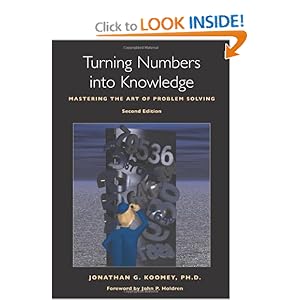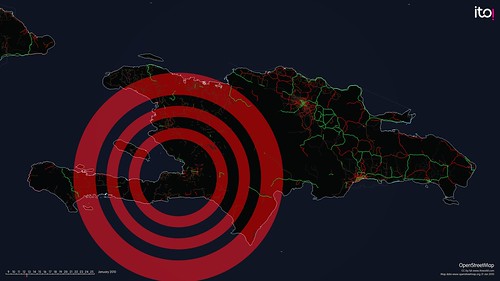I just received from amazon.com Jonathan Koomey's Turning Numbers into Knowledge book, and one of the things that caught my eye is the Foreword where
There is nothing else like this book out there.
Nobody who deals with problems where numbers matter—and everybody in today’s world really needs to—should be without it.
John P. Holdren*
Woods Hole, MA, October 2007
And Professor Holdren explains the "Tricks of the Trade" course he taught at UC Berkeley.
Berkeley’s guardians of academic respectability eventually made me change what they regarded as too frivolous a title for the course to “Professional Methods for Interdisciplinary Careers”, but the focus remained the same for the 15+ years that I taught it. It covered ways of thinking through complex problems; how to find and manage information; how to function in a committee; how to identify and avoid common pitfalls in the interpretation of data; how to present results clearly in words, graphs, and tables; how to manage one’s time; and even how to avoid jet lag.
Many students over the years suggested that I should write a book teaching the “Tricks of the Trade”. Notwithstanding my advice to others about time management, however, I never found the time to write it.
With the 2001 publication of the first edition of Jonathan Koomey’s remarkable book, Turning Numbers into Knowledge, I realized that I no longer needed to try. Dr. Koomey, who had taken my course in the 1980s as a Berkeley graduate student, had plenty of ideas of his own about the need and how to fill it. And the book that he wrote surpassed what I would have done, if I had found the time, in every important respect
WSJ has a post on how there is a new wave of Business Schools planning to educate students in data analysis.
Business Schools Plan Leap Into Data
By MELISSA KORN And SHARA TIBKEN
Faced with an increasing stream of data from the Web and other electronic sources, many companies are seeking managers who can make sense of the numbers through the growing practice of data analytics, also known as business intelligence. Finding qualified candidates has proven difficult, but business schools hope to fill the talent gap.
This fall several schools, including Fordham University's Graduate School of Business and Indiana University's Kelley School of Business, are unveiling analytics electives, certificates and degree programs; other courses and programs were launched in the previous school year.
Some of the students who are thinking of getting into Data Analytics should consider Jonathan Koomey's book, Turning Numbers into Knowledge.



